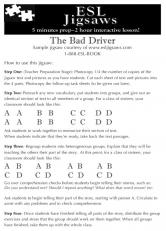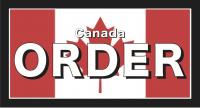ESL Jigsaws
5 Minutes Prep - 2 Hour Interactive Lesson!
Viewing entries tagged with 'beginner ESL'
Field Testing Callan's Beginner Essentials
Field testing will be completed circa May 1, 2018.
Canadian Statutory Holidays Reading Lesson for Beginners
This lesson is suited to classes learning the names of Canada's provinces and territories and their abbreviations and to those learning the names of the statutory holidays of Canada. It is also relevant to study of employment law.
Make Canada Study Come Alive
Making your study of Canada for beginner and intermediate ESL come alive is easy with the use of some supplemental materials, like pictures, video and songs. Over the years I have collected about 15 images per province or territory from free Canada calendars, depicting such things as wheat fields, fishing villages, salmon, Douglas Fir trees and igloos that perfectly illustrate aspects of the jigsaws in Callan’s Beginner Canada Jigsaws or Callan’s Canada Jigsaws. I also like to use the video Destination Canada, found in most tourist shops. I show the section of the video related to a given province or territory, either with the sound off and my own narration for lower levels or with the sound on for higher levels.
Teaching about Labor / Labour Day
If you are teaching ESL to immigrants or EFL to VISA students and the topic of Labor Day in the United States or Labour Day in Canada comes up, you may find that your students also celebrate a day for workers in their home countries, but that day is usually on May 1st. A national holiday in over 80 countries, May 1st is also celebrated unofficially in many more.
Garage Sales & Thrift Stores
It's summer and I'm back on the topic of second hand shopping. If you are teaching English to new immigrants, they may see something as they walk around their neighbourhoods at this time of year that they don't have in their home countries: garage sales. Likewise, they will likely come across thrift stores or flea markets in their neighbourhoods.
Writing About Household Repairs
I'm a big fan of using picture dictionaries to teach ESL, particularly to beginner and intermediate levels. Oxford Picture Dictionary, Heinle, Word By Word, I use them all. While they are all excellent and worth purchasing, my favourite is the Oxford Picture Dictionary because the pictures are so clear and pleasing. They also have different levels.
Bargaining Language & Soft Skills
Bargaining (or haggling) takes place all over the world. North Americans often think of it as restricted to places like flea markets or garage sales, when in fact bargaining takes place in a wide variety of business transactions. Think of the negotiation involved in the purchase of expensive items, such as cars or real estate.
Expanding on “Where Do You Live?
“Where do you live?” is one of the personal info questions teachers start with when teaching absolute beginner ESL. Once students have moved past the absolute beginner stage, it’s fun to move beyond that question and get really specific. Where in the world do you live? Where are you now?
Page Directions for Low Beginner ESL
I've created an interactive activity for low beginner ESL to practice page directions. You'll find your class runs smoother when you can draw students' attention to where the class is looking on the page you're working on and make sure everyone is following. You're welcome to download my materials for free to use in your classroom.


